Review: 2010 Audi S4
Once upon a time, S was for Audis what M was for BMWs. A decade ago Audi took an A4, added a pair of turbos to the V6, stiffened the suspension, plus-oned the alloys, and tagged the result the S4. A special driving experience that became more special (if less moddable) when the 250-horsepower turbo V6 was replaced by a 340-horsepower V8 a few years later. The A4 was redesigned for 2009, and this year there’s a new S4. The V8 has been tossed in favor of a supercharged 3.0-liter V6 that kicks out 333 horsepower. Is the resulting car worthy of the S?
With the B8 A4, Audi rearranged the drivetrain bits to shift the front axle forward four inches. The primary goal: lose the nose-heavy feel that has long plagued Audis. But this change also improved the car’s proportions—having the front wheel opening just a couple inches from the front door cut is never pretty. Other changes included some BMW-influenced (but more tastefully done) “flame surfacing” on the lower bodysides. Even with these changes, the current A4 looks much like the previous one at a glance. It’s a handsome car. But the closely related A5 coupe is stunning.
The new Audi S4 looks nearly identical to the A4 on which it is based. The wheel design is unique, but such a subtle difference will be lost on all but the most ardent Audi fans. The fascias might also be tweaked, but I couldn’t tell. I literally checked the badges prior to entry to verify that I was indeed getting into an S4 rather than an A4.
The S4’s stealth act continues in the interior. Good thing then, that Audi has led the industry in interior design and construction for at least the last decade. While the S4’s cabin is largely up to snuff, some bits seem cheaper than in the previous car, most notably the silver plastic trim plate across the top half of the instrument panel face and the hard plastic door pulls. Other manufacturers wrap the latter, a key touch point, in leather, and it feels good. Why doesn’t “the interior design leader?”
The new S4, like the A4 on which it is based, is 4.6 inches longer and 2.1 inches wider than the old one. This larger exterior translates to a larger interior. In the front seat, you sit a bit lower behind a more imposing instrument panel than before and the cabin feels noticeably wider. These changes, together with the longer wheelbase, lend the B8 an almost midsize feel. This can be good or bad. Buying a compact sedan only because it costs less? Then good. Buying a compact sedan because you like the more agile, more intimate feel of a smaller car? Not so good.
The S4 does have standard sport buckets. The prominent side bolsters provide excellent lateral support, but are just short of uncomfortably tight for me–and I have a fairly slim build. Larger people might find these seats unbearable. My seat recalls the old S4’s Recaro buckets much more fondly.
In the back seat, knees have about an inch more space, which is significant since many adults couldn’t quite fit into the back of the old S4. As in nearly every competitor, the rear seat remains too low to the floor to provide adults with thigh support. As before, the rear seat folds in two parts to enlarge the trunk. Try finding that in a Japanese competitor.
The new Audi S4 is available with two transmissions, a six-speed conventional manual and a seven-speed automated dual clutch manual (“DSG” in VW-speak, “S tronic” in Audiese). I drove the former. Start up the new S4 and get going, and the first thing you’ll notice is that the shift lever is a too tall for comfort. First mod? Otherwise, the new car’s shifter feels smoother than that in any other Audi I’ve cogswapped.
The next thing you notice is that, when driving the new Audi S4 casually, there isn’t much to notice. In the old V8-powered S4, a sporty burble reminded you at all times that you were driving something special. In the new one, noise from all sources, including the engine, is low. In some supercharged engines (Ford’s V8 comes to mind), the blower assaults the eardrums. With this one, my ears failed to notice it.
Is the new S4 quick? Absolutely. The supercharged engine doesn’t pack the now-off-now-on wallop I recall in the old biturbo V6—power builds more linearly and without a lag—but it does pull very strongly. You’re at sixty-plus before your senses have time to process the (non) experience. Fuel economy benefits from the engine swap: EPA ratings go from 13/19 to 18/27—goodbye gas guzzler tax. The benefits don’t end here—Audi has also cut the price by a few thousand to reflect the lower manufacturing cost of this engine. And yet, something is also lost. As Baruth noted in his drive of the A6 3.0T, the supercharged V6 verges on characterless. It has none of the spine-tingling soul of the V8.
Like the new A4, the new S4 has more communicative steering and more balanced handling than the old one. The nose no longer seeks the outside curb in hard turns. Any curve taken at semi-sane speeds is carved without complaint. And yet the edge that marks the best performance sedans is absent. The driver gives orders, and the car faithfully executes them, but the two don’t meld. On the flip side, the ride is surprisingly absorbent.
A couple of performance-oriented options were absent from the “stripper” S4 I drove. An $1,100 active rear differential should lend the S4 more of the feel of a rear-wheel drive car, with (hopefully) throttle-induced oversteer on demand. Spend an extra $3,950 for the Audi Drive Select Package, and this
active differential is joined by active steering, ultra-quick electrically-adjustable shocks, and a switch to alter the calibrations of both. The adjustable steering and shocks get stellar reviews in every Audi in which they’re offered. With them, the latest S4 might be the most thrilling yet.
Problem is, without them the new Audi S4 feels much like a regular A4, just with 50 percent more power. If Audi had called the car I drove an A4 3.0T, as it does when the A6 is fitted with this engine, then I’d have no complaints. But an S4 should be more special. As it is, it’s just a very quick and very competent but otherwise normal-feeling car.
My suggestion: give the car I drove the regular A4’s more accommodating buckets and rename it the A4 3.0T. The S4 nameplate should be reserved for a car with a more thrilling engine note, the trick suspension and steering, and tuning that thoroughly engages the driver in the experience. Otherwise, the S badge seems like little more than a marketing afterthought.
[Michael Karesh operates TrueDelta.com, a provider of car reliability and real-world gas mileage information]
Performance: 5/5 By any objective standard, the supercharged six is strong. Just soulless.Ride: 4/5 The biggest pleasant surprise–the ride doesn’t suck. Tar strips? What tar strips?Handling: 4/5 More balanced and communicative, but (at least without the optional trick shocks are rear end) it lacks a sporty edge.Exterior: 4/5A handsome car. But why is it so hard to distinguish from the A4. And why can’t it look more like the A5?Interior: 3/5 Less special without the B7’s Recaros and with the additional hard plastic.Fit and finish: 3/5The bits fit together well. But have I mentioned the hard plastic door pulls?Toys: 2/5Nothing special on the base S4.Desirability: 4/5Those who buy based on stats will want one. Those seeking a passionate romance…will keep waiting for a car company to remember that it’s not all about the stats.Price as tested: $47,200.Overall rating: 4/5Highly competent. Now just needs a soul.Michael Karesh lives in West Bloomfield, Michigan, with his wife and three children. In 2003 he received a Ph.D. from the University of Chicago. While in Chicago he worked at the National Opinion Research Center, a leader in the field of survey research. For his doctoral thesis, he spent a year-and-a-half inside an automaker studying how and how well it understood consumers when developing new products. While pursuing the degree he taught consumer behavior and product development at Oakland University. Since 1999, he has contributed auto reviews to Epinions, where he is currently one of two people in charge of the autos section. Since earning the degree he has continued to care for his children (school, gymnastics, tae-kwan-do...) and write reviews for Epinions and, more recently, The Truth About Cars while developing TrueDelta, a vehicle reliability and price comparison site.
More by Michael Karesh
Latest Car Reviews
Read moreLatest Product Reviews
Read moreRecent Comments
- Dale Quelle surprise.
- 3SpeedAutomatic Nice looking, but IIRC, there was an issue with these engines where a knock would develop. That may account for the very low milage. 🚗🚗🚗
- Redapple2 Used to watch F 1 a great deal. Now? F1 Random thoughts:1 Silly rules bug me. Must use 2 types of tire. Cant refuel. Drag reduction can only be used in certain areas of the track and only if you are so close to the car in front.2 Passing is rare. Pole sitter wins a high % of the time.3 A new team can only start in F1 if they get the blessing of the overlords. Evil gm Vampire was barred. How about this. Anybody with a car that meets the construction rules can try. If your speed qualifies and you pay the entry fee. You re in. So is anybody else. 4 I tune in for Martin Brundle's grid walk. In my life, it s must see tv. But he is often bumped or cancelled. Grid walk takes place 1 out of 3 or 4 races.5 So, because of this utter bull sheet and other points, I ve migrated to IMSA and MotoGP. I might catch a summary on the youtube.
- Redapple2 I retract my comments and apologize.
- Flashindapan I always thought these look nice. I was working at a Land Rover dealership at the time the LR3 came out and we were all impressed how much better it was then the Discovery in just about every measurable way.



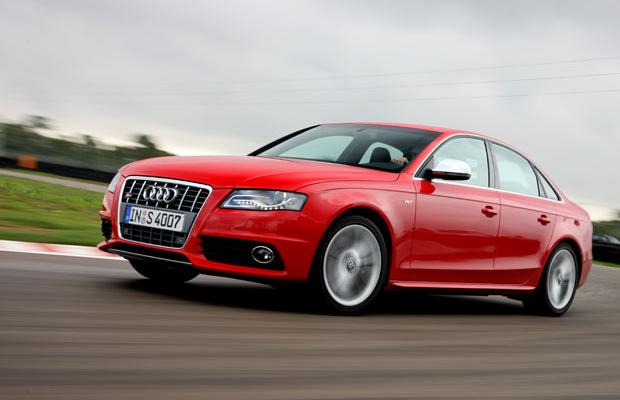



















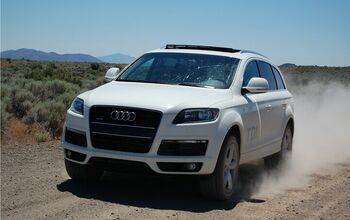
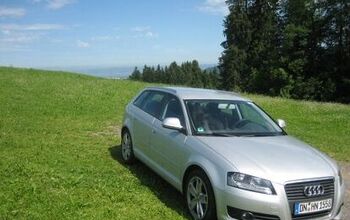

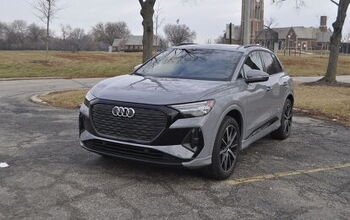
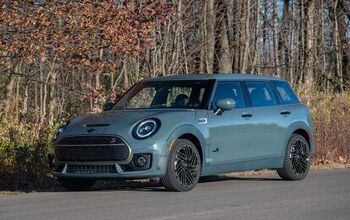










Comments
Join the conversation
Just read Lexintonian's comment about the S4 only having 5 more HP than the G37: Drive the two cars, then make the same statement. I own a 335, and if the S4 pulls like my car does, then the G37 is worlds lower.
[...] is used in the OED’s first attestation, back in 1977, and here’s an example of “plus-oned the alloys”, whatever that means). The trouble, though, is that the word isn’t written [...]